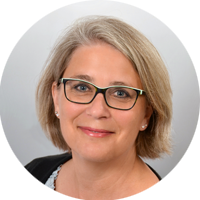Clothing of women in Oman
In Oman, there are strong regional differences in cothing in colour, material and style regarding women’s dress.
Omani women mostly wear a flowing tunic over trousers. The trousers -- sirwal -- are wide and loose-fitting at the top, tight at the ankles, where it is richly adorned with stitchery and a zipper to make it easy to remove. Over this she wears a chemise, the kandoura, which reaches to the knees. It is also adorned and matches the trousers.
In the region of Dhofar this chemise is made of heavy velvet and reaches to the ankles, and even draggles behind.
Regarding the kerchief, the lahaf, the variations in size, colour or pattern are almost unlimited.
Many women in the cities of Oman wear the abaya, that notorious black cape, over brightly coloured clothes but the face is not veiled.
Bedouins and some women along the coast and in cities wear a mask, the burqa. The burqa served and still serves the Bedouin women in the desert for protection against sun and sand. Contrary to many prejudices, it is often worn by Omani Bedouin women.
"We do not wear the burqa because it is shameful to show oneself without them, but because it is nice to be with them." This quote from an Omani makes it clear that a judgment on the burqa quickly results in a traditional prejudice.
The mask has its origin among the desert inhabitants, who wear them for protection against sun and sand. They also sew these masks. Most of the burqas are black, but now and then they shine golden or purple. There are big differences in "design". Some masks emphasize the woman's gaze through their eye-adapted cut-outs; others, in turn, barely cover the face, at most frame it.
Clothing of Men
The headdress in Oman is very important. Men wear a round cap or a cashmere kerchief. On the long vestment -- the "dishdasha" -- many Omanis have a perfumed tassle.
No man in Oman goes outside without a headdress. It is an important part of his clothing composed either of a round cap, called kumma, a cashmere kerchief, the massar, or of an combination of both, whereas the massar is wound over the kumma.
The long vestment is called dishdasha and has three typical attributes: It has no front pocket, from the collar dangles a tassle which is perfumed, and thirdly they are available in all imaginable colours, not only in white as in the Emirates or Saudi Arabia. Under the dishdasha is worn the wizaar, which is is copious and airy, and covers the legs.
Many Omanis don their decorative dagger, the khanjar, any time they dress up, not only for festive occasions. The covering in black or brown, called bisht, which seems like a coat is in contrast only for formal events and on the front it has a golden border.
Are you interested in a trip to Oman?
► Explore Oman with ARABIA FELIX
Your contacts for travels at Arabia Felix:
Maria Popp, Karin Nowack und Georg Popp
✆ Tel.: +49 (0)89 / 30 77 92 00
✉ info@oman.de




